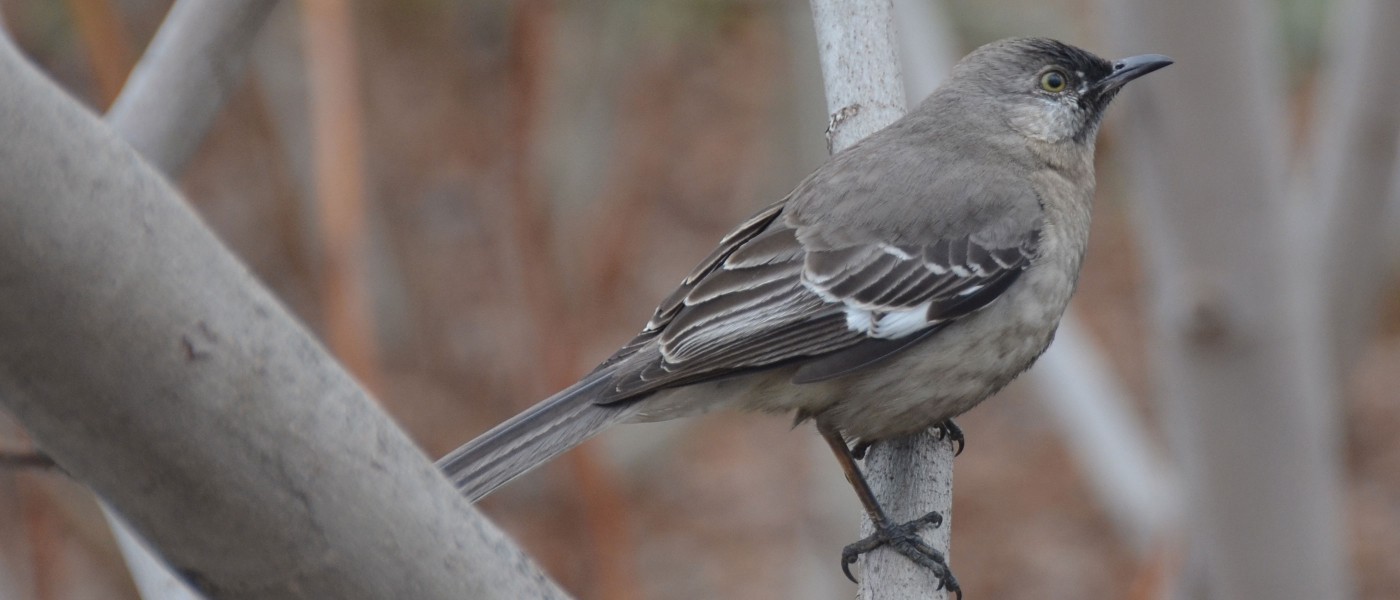Have you ever woken up at 3 a.m. to the sound of a bird singing outside your window? It was likely Northern Mockingbird (Mimus polyglottos). This bird just loves to sing day and night, and whatever song it sings is usually repeated three or more times. Mockingbirds are famous mimics, copying the songs of other birds as well as noises like car alarms. This slender gray bird, along with the catbird and the brown thrasher, is a member the bird family Mimidae, Latin for “mimic.” The mockingbird is the official bird of five southern states, including Florida and Texas. Yet it is present year-round here in the New York City area too. This wasn’t always the case.
In the early 20th century, the northern mockingbird was uncommon in New York, but that began to change with the spread of the multiflora rose (Rosa multiflora), an Asian species that was planted in great numbers as a quick hedge starting in the 1930s. The northern mockingbird loves to eat the hips of this rose—it will find a stand of multiflora rosebushes and defend the surrounding area against all comers, including other birds, cats, and even people. Thanks in part to the mockingbird’s help in spreading seeds, the plant has proliferated to the point of invasiveness.
Mockingbirds will also eat other types of rose hips, and you will often see or hear them in BBG's Cranford Rose Garden, where there is one R. multiflora specimen along with a number of R. multiflora hybrids. This time of year, and on through winter, you may observe the mockingbird there protecting its food source by jumping up and down, displaying its white wing patches, and even flying at and hitting a bird or animal that comes too close. In spring, as breeding season begins, it will start eating protein-rich insects as they become more available. In the meantime, look and listen for this aggressive bird in and near the Rose Garden.
The Birds of Brooklyn series looks at some of the most familiar and fascinating birds that call Kings County their habitat.




